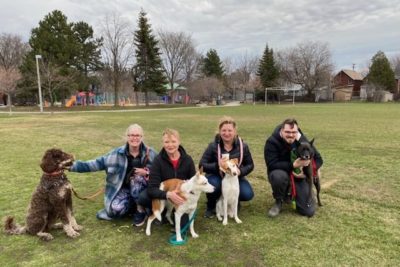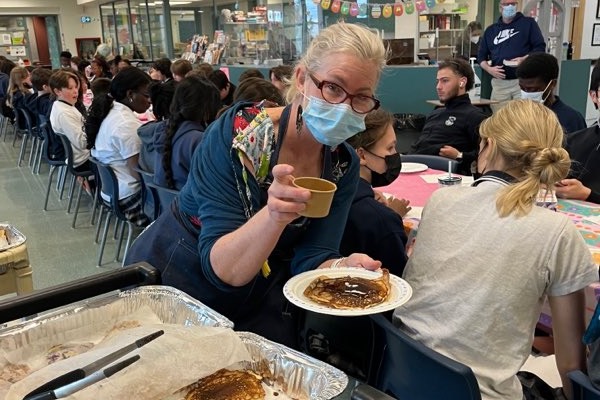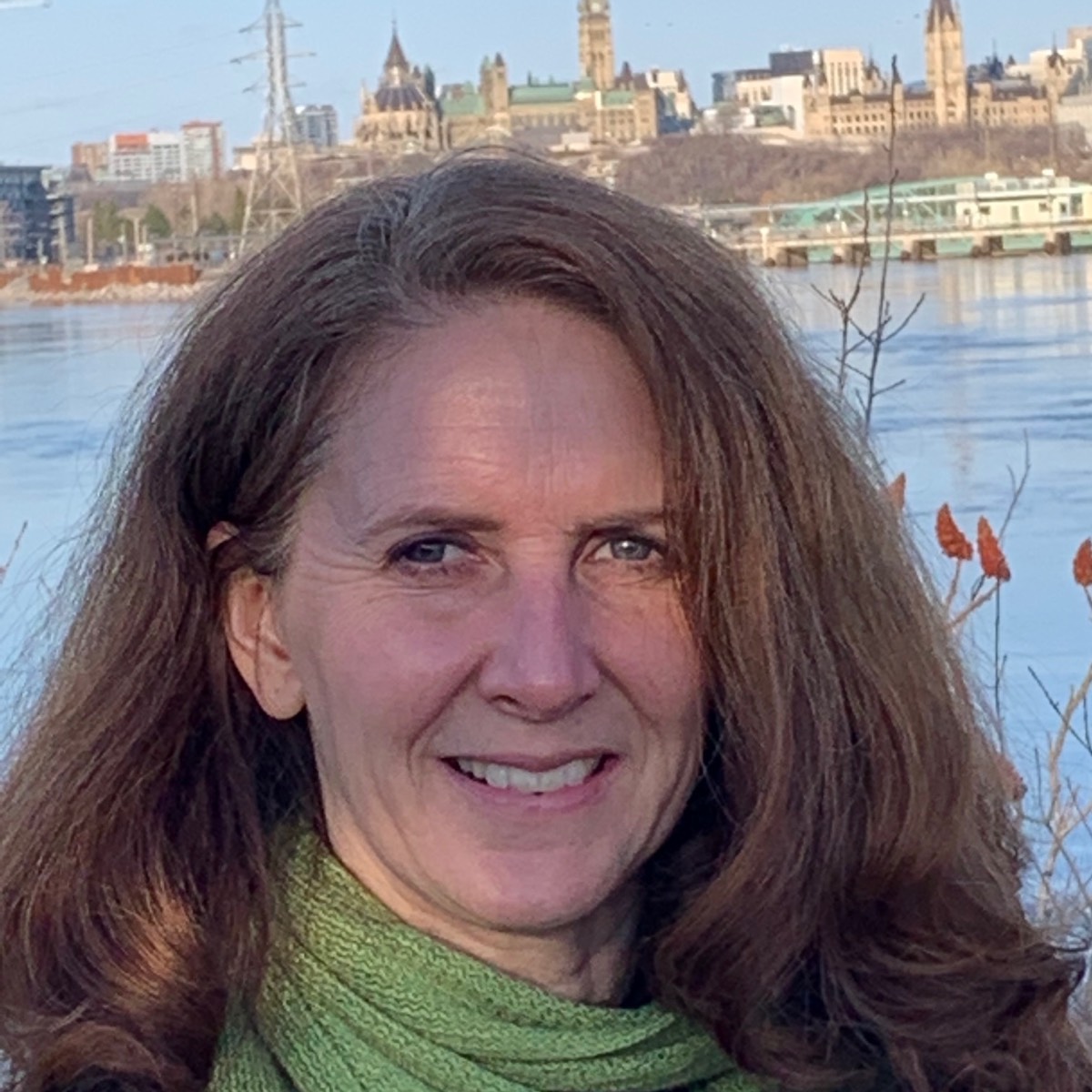Dog owners may benefit as much from walking their pets as the dogs — fresh air, exercise, often chatting with other people out walking their dogs. When Eva Zacios met Sarah Murray in this way at Ottawa’s Fisher Park, it ended up benefitting a lot of other people too.
As the two women got to know each other on early morning walks, Zacios talked about St. Luke’s Table, where she has volunteered since 2013, served on the management board and on its fundraising committee. She told Murray about the effects of the pandemic on the day program that offers meals, help navigating social services and health care, as well as shower and laundry facilities to vulnerable people. They were low on essential toiletries —like toilet paper, soap, toothpaste and toothbrushes— that they distribute to the those who come to the centre in the basement of St. Luke’s Anglican Church on Somerset Street.

Photo: Contributed
Murray, an English teacher at Immaculata High School, listened intently. Maybe the school could help, she thought. A drive to gather donations of toiletries could be a Lenten project. The students had missed out on so many community-building activities of this kind during the pandemic. She suggested it to the school chaplain, but she had just had COVID and wasn’t up to organizing it, so that fell to Murray herself.
She talked about the idea with her Gr. 7 homeroom class, and they liked the idea. It would be a competition to see which class could bring in the most items.
She integrated the project into their curriculum as a media unit. Their assignment was to market the drive to get the rest of the school involved. They had to make posters. She taught them the concept of an elevator pitch; “You have 30 seconds to convince students why they need to do this,” she told them. Two staff — Ottawa Day Programs community development manager Liz de Melo and St. Luke’s Table program manager India Bedson— came to talk to the students about the community at St. Luke’s.
“When we started, I asked the kids who do you think the clients are for St. Luke’s? Who are we helping?” Murray explained. ‘Drug addicts,’ they said. “There were a lot of judgements and stereotypes about homeless people. India and Liz were able to debunk a lot of the stereotypes. ‘Yes,’ they said, ‘there are some people who struggle with addiction. Why are they struggling? What do you think their story is?’ Their interaction with the students was amazing. Liz … asked the students how many cups of coffee do you think we serve a day? How many meals? How many loads of laundry do we do? It gave the kids a lot of insight.”
As they were preparing their pitches for the other classrooms, Murray suggested they could sum up the problem this way: “There’s a shortfall in funding for St. Luke’s Table. They need to supplement the 70% of their budget that they get from the city, so they need our help.”
“But that’s not the real problem,” one of the kids told her. “The real problem is homelessness, and are we really solving it with the drive?” This is critical thinking, Murray said. “These kids thought deeply about what we were doing and why we were doing it and how effective we would be with it.”
How does a toothbrush help? Liz and India told the students that these things show that people care. They provide dignity and hope for a lot of people.
The Immaculata toiletry drive was a big success and far exceeded Murray’s expectations. “I thought 1,000 items maybe, because the pandemic has hit families so hard, the cost of groceries is going up, gas, even cooking food is expensive,” she said.
But the students, especially the Grade 7 and Grade 8 classes, got caught up in the spirit of giving and competing with one another to bring in the most items.

Photo: Contributed
“There’s a lot of diversity in our school population, and I think some families of our students are using food banks, St. Luke’s Table and organizations like that to stretch the dollars in their budgets, but those kids still brought in rolls of toilet paper. They were getting them from the shelter and then returning them, but they wanted to be part of the community of giving. That was really touching,” said Murray.
In the end, they collected about 4,000 items. It all fit, just barely, in Murray’s van, and she delivered the items to St. Luke’s just before Easter. While she was there, she met a man who was part of the St. Luke’s community. When he learned she taught at Immaculata, he asked if she knew two students who he named. “They are living on the street, and you had better look out for them,” he advised, saying he was also looking out for them.”
“I did know that the one student was at risk,” Murray said, adding that she had wondered about the other. “There’s a lot of caring adults in the [school] trying to help them, but that woke me up to the fact that we think we are helping other people, but we are also helping people within our own community.”
Back at the school, the winning classrooms were treated to a homemade pancake breakfast. “They came together as a community to give to St. Luke’s Table, and they came together as a community to eat and celebrate together. It was super important, very joyful. It was an extremely positive experience for me and for the students.”


St. James, Morrisburg — Stormont Deanery